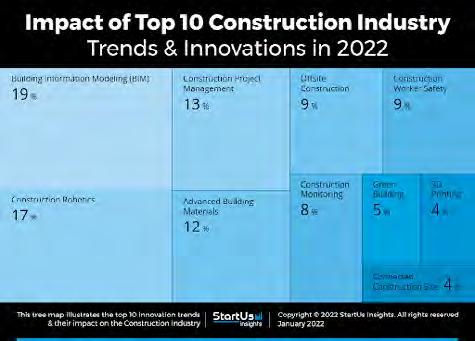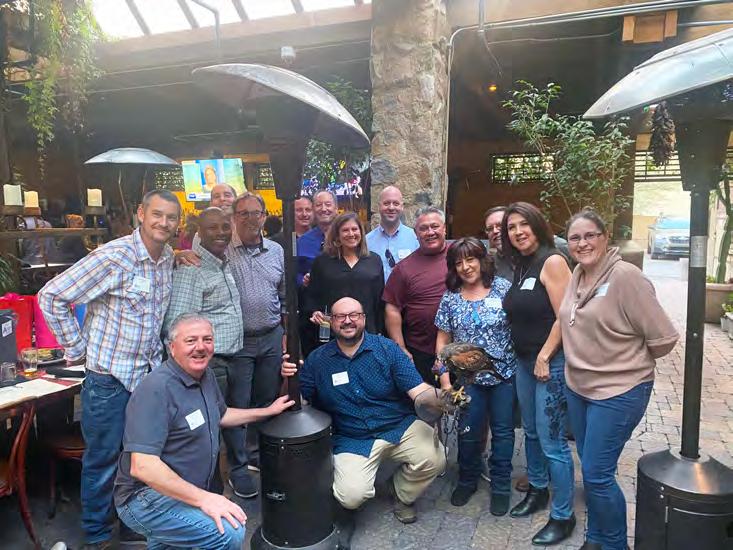5 minute read
A Little Construction Waste Hocus Pocus
FEATURE
A Little Construction Waste Hocus Pocus
by Damon Carson, Repurposed Materials, Inc.
If you’ve watched the trucks hauling debris away from a construction site, you have some idea how much construction and demolition (C&D) debris is produced. But you might not have considered just how immense the quantity of debris produced on a nationwide scale.
The EPA estimates that 230 to 530 million tons of C&D debris are generated in the United States annually, which is more than twice the amount of generated municipal solid waste.
If you piled all 600 million tons of C&D waste from 2018 (that’s the EPA’s estimate) a foot deep, it would spread out for 215,000 acres, covering a space the size of New York City, with plenty to spare. Stacked 50 feet high, we’re talking about 3 billion square yards of debris - more than 1.5 million football fields.
Subcontractors on these job sites play a big part in the production, as well as the management, of waste. You don’t have to be a tree hugger to be concerned about how much trash is being produced in the United States today. And you don’t have to undertake big measures to make a contribution to landfill diversion.
The ingenuity of a “repurposing” leader is helping construction professionals save money while also preventing unnecessary waste.
A company called repurposedMATERIALS is helping industries across the nation reduce their environmental impact by finding a second life for a surprising number of items. Here are few of

Need a tarp? Think vinyl billboards!

California Berkely Gym Floor uses reclaimed wood Old ski cables make impressive handrails

repurposedMATERIALS’ creative applications of used materials: • Retired military cargo parachutes serve as jumbo shade tarps to protect work crews from sunburn and heat stroke on job sites • A retired street sweeper brush becomes a scratching post for cattle • Aluminum stadium bleacher planks are repurposed as decking for utility trailers
“We all have a part to play in protecting our environment,” said repurposedMATERIALS owner, Damon Carson. “It makes sense environmentally and economically. Giving materials a second life keeps them out of the landfill, which can come with surprising cost savings.”
For half a century, the solution to the waste problem has been recycling. But recycling involves the reprocessing of materials. It uses energy, another kind of waste. It’s expensive. And it’s inefficient.
For those reasons, recycling ranks just above ‘waste-to-energy’ (i.e. burning) on the waste hierarchy. Recycling keeps a portion of the junk out of the landfill. But is there some way to more efficiently reduce industrial waste?
Carson believes the answer is ‘yes,’ and the solution is not recycling. It’s “repurposing.”
Rather than melting, shredding, chipping or grinding – the recycling process – repurposedMATERIALS finds new uses for materials in their current form.
“If something is obsolete to the primary user, that doesn’t mean it doesn’t have value somewhere,” Carson said. “If you find yourself saying ‘I can’t use this. What am I going to do with it?’ that’s where we come in.”
Carson encourages construction professionals to consider ways to utilize castoffs from other industries. To do this, he advises that they consider the ‘ACE’ – attributes, characteristics and engineering – of the safety products they need.
“You ask yourself ‘What ACE do I need?’” Carson said. “‘Is there something already out there that I could substitute with those characteristics?’ It’s a way to stretch your budget while still accomplishing the task. And everyone benefits when items with some second-purpose are diverted from the landfill.”
And when it comes to disposing of materials, whether they be unused excess products, or used materials, Carson said he can help contractors find a second-life purpose.
“Your options are the trash truck or the repurposed materials truck,” Carson said. “One truck is going to take it and bury it. The other truck is going to give it a second life.”
Carson challenges those in every industry to consider if there are “repurpose-able” options for their obsolete materials before simply banishing them to the landfill.
Finding second lives for construction and industry materials is fun and rewarding for his company, Carson said.
“Take for instance, worn out mining conveyor belts,” Carson said. “They are a super tough material that can be repurposed as a protective curtain during demolition blasting. Or they can be used as a matting over grass or pavement when using tracked vehicles. Or they can be used as protection for a roof membrane when installing or repairing HVAC equipment on a rooftop.”
Carson also pointed to the reuse of retired advertising billboard vinyl. These he has repurposed as waterproof tarps to cover building materials on a job site or to cover structures when they are opened up to the weather during a remodel.
A third example is old highway guardrail posts, which are repurposed as cribbing by house moving companies and as shoring materials by excavation contractors.
Repurposing is at the intersection of affordability and sustainability. For the one getting rid of waste, there may be a savings over paying to dispose of the material. And for the one utilizing repurposed material over a primarypurpose product, there is typically a savings of 50 - 75 percent.
“We adhere to the belief ‘It is not a waste until it is wasted,’” Carson said. “If you can avoid paying for disposal, and you can keep it out of the landfill, it’s a win-win.”
Carson’s advice: Think before you buy new. Ask yourself “What repurposed solution might there be that you haven’t thought of?”
But Carson emphasized that it's not just used, worn out items that can be repurposed.
“When I started 10 years ago, we focused on ‘used’ materials,” he said. “But as we got into the industry, we realized that ‘waste’ in corporate America is anything businesses don’t want. Sometimes it’s used materials, but often it’s ‘off-spec’ materials. It’s something that’s not the right color, isn’t popular anymore, has become a little outdated…whatever. There may be a host of options for someone to repurpose what another person doesn’t need, even if it’s never been used before.”
About the Author
Damon Carson is the owner and founder of repurposedMATERIALS. With yards in Arizona, Colorado, Texas, Iowa, and South Carolina, his company has a very unique business model focused on repurposing waste and obsolete materials from Corporate America. For advice on repurposing materials, contact Carson by telephone at 720-615-0281, or by email at
damon@repurposedmaterialsinc.
com. To see some of the materials they repurpose and have available, check out the website. https://www. repurposedmaterialsinc.com.








